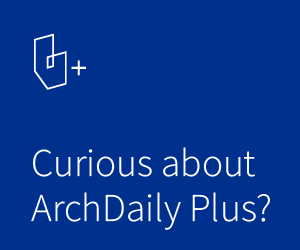
Work always evolved, adapting to the tools, technologies, and social structures of its time. In the earliest human societies, basic survival was the driving force behind labor, with hunter-gatherers dividing essential tasks to meet elementar needs. The Agricultural Revolution marked a turning point, introducing permanent settlements and specialization, which led to the emergence of labor division in ancient civilizations. As time progressed, the Middle Ages saw the rise of the feudal system, while trade and guilds laid the groundwork for a monumental shift: the Industrial Revolution. This era transformed work from artisanal, home-based production to centralized, large-scale factory systems.
Before industrialization, many service providers worked from home. But as factories grew, the workforce became centralized, transforming the relationship between worker and workplace. The rise of the service sector and modern corporations gave rise to office spaces that were often rigid and compartmentalized, like the iconic cubicles of the 20th century. Now, as work becomes increasingly digital and decentralized, offices are transforming again. Open layouts, specialized zones, and modular pods are replacing static configurations, promoting flexibility, focus, collaboration, and well-being. But how do innovations in modern workspaces respond to the demands of today's professionals?

This shift gained momentum with the advent of the digital revolution and advances in communication technologies, which began to challenge the rigidity of traditional office structures. The rise of remote and hybrid work—significantly accelerated by the 2020 pandemic—compelled organizations to reconsider not only where work happens but also how. In response, flexible office models emerged, addressing new expectations for autonomy, mobility, and work-life balance. With the rise of hybrid work, the need for flexible solutions that balance focus and collaboration has become more apparent. By optimizing space and increasing task efficiency, a carefully structured workspace contributes to overall business success. Since different teams and types of professionals need varying environments that may change over time, strategically designating specific zones within the office is essential.
Ideally, an office should offer a variety of environments to accommodate different working styles. The reception area, often the first point of contact, welcomes visitors and sets the tone for the experience. Dedicated spaces for collaboration, focus, and relaxation boost productivity and help organizations stay agile in the face of changing markets. The Open Area facilitates daily operations, including hybrid work through hot-desking, where employees don't have fixed seating. The Focus Zone provides a quiet environment for tasks requiring concentration. Meetings and training sessions occur in the Meeting Zone, promoting structured communication, while the Collaboration & Brainstorming Area stimulates creativity and dynamic idea exchange. Meanwhile, the Relax Zone allows for rejuvenating breaks, balancing well-being and performance.


One of the main challenges of dynamic office environments is noise, which can significantly hinder productivity. Studies show that distraction from ambient noise can reduce productivity by up to 15 times more than health-related absences. To address this issue, acoustic booths have emerged as an effective solution, providing quiet, dedicated spaces that enable employees to focus, conduct video conferences without interruptions, and hold confidential conversations. Some companies have become specialists in this field, notably Hushoffice, which focuses on the design and production of modular acoustic booths and phone booths. These solutions are tailored to enhance both the acoustic performance and functionality of modern office environments, offering flexibility and adaptability to meet evolving workplace needs. Available in various configurations, the pods are engineered to optimize user comfort, visual and acoustic privacy, and ergonomic standards. Their modular nature allows for integration without significant structural modifications, reducing material waste and supporting more sustainable space management. The following configurations are available:
- Individual Pods – hushFree.S, hushFree.S Hybrid, and hushFree.XS: Designed for phone and video calls and concentration-heavy tasks, these pods create a quiet and functional environment within typically noisy, dynamic offices. Each features an adjustable-height desk, side LED lighting, and customizable ventilation for user comfort. In hybrid work environments, these booths help facilitate virtual meetings with greater privacy and fewer disruptions.
- Meeting Pods – hushFree.M and hushFree.Access.M: Designed for small groups, these pods accommodate up to four people and feature adequate acoustic insulation to support confidential conversations and focused exchanges. They offer a practical alternative for quick discussions, alignment sessions, and spontaneous collaboration within open-plan offices—plus, an accessible version is available to ensure inclusivity for all users.
- Multifunctional Pods – hushFree.L and hushFree.Access.L: With space for up to six people, these pods can be configured for various uses, including informal meetings, brainstorming sessions, or even break times. Flexible furniture—such as poufs, sofas, or low tables—allows the environment to adapt to team needs, supporting a wide range of activities within the workspace.


These pods combine acoustic insulation and high-quality lighting, creating optimized spaces for modern work. Following best practices for workspaces, the lighting in these pods is predominantly neutral (4000K to 4500K), reducing eye strain and maintaining a focus-friendly environment. Additionally, a lighting intensity of 500 lx at the tabletop level ensures a balance between comfort and efficiency—ideal for activities such as meetings, reading, and computer use.
Hushoffice pods are also certified for autism by the IBCCES, underscoring the brand's commitment to inclusion. This certification means the pods provide a controlled and comfortable environment for neurodivergent employees, minimizing excessive sensory stimuli and ensuring a more accessible work experience for everyone. The human-centered design of the pods further emphasizes well-being, with the hushAssistant enabling intuitive control of settings. Automated lighting adjusts to the body's natural circadian rhythm, reducing visual fatigue and enhancing comfort throughout the day.

As the nature of work continues to evolve, so too must office spaces. In a landscape characterized by flexibility, diverse demands, and an emphasis on well-being, solutions like acoustic pods offer a versatile and effective response. They optimize space usage, enhance productivity, and contribute to creating more inclusive, comfortable, and future-ready work environments. In a world where change is the only constant, intelligent and sensitive adaptation is key—both for companies and the spaces they inhabit.









